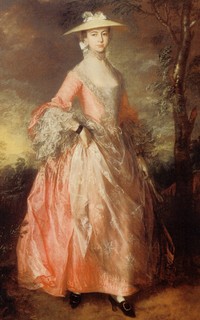
Henry Cavendish
Henry Cavendish, scientist, b 10th Oct 1731From Wikipedia article on Henry Cavendish:
"At age 11, Cavendish was a pupil at Peter Newcome's School in Hackney. At age 18 (on 24 Nov 1749) he entered the University of Cambridge in St Peter's College, now known as Peterhouse, but left four years later on 23 Feb 1753 without graduating. His first paper, 'Factitious Airs', appeared thirteen years later, in 1766.
His only social outlet was the Royal Society Club, whose members dined together before weekly meetings. Cavendish seldom missed these meetings, and was profoundly respected by his contemporaries. However his shyness made those who "sought his views... speak as if into vacancy. If their remarks were...worthy, they might receive a mumbled reply, but more often than not they would hear a peeved squeak (his voice appears to have been high-pitched) and turn to find an actual vacancy and the sight of Cavendish fleeing to find a more peaceful corner.
Cavendish is considered to be one of the so-called pneumatic chemists of the eighteenth and nineteenth centuries, along with, for example, Joseph Priestley, Joseph Black, and Daniel Rutherford. By combining metals with strong acids, Cavendish made hydrogen (H2) gas, which he isolated and studied. Although others, such as Robert Boyle, had prepared hydrogen gas earlier, Cavendish is usually given the credit for recognizing its elemental nature.
Cavendish observed that hydrogen, which he called 'inflammable air', reacts with oxygen, then known as 'dephlogisticated air', to form water."